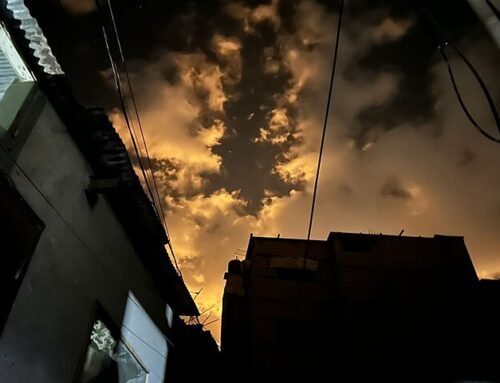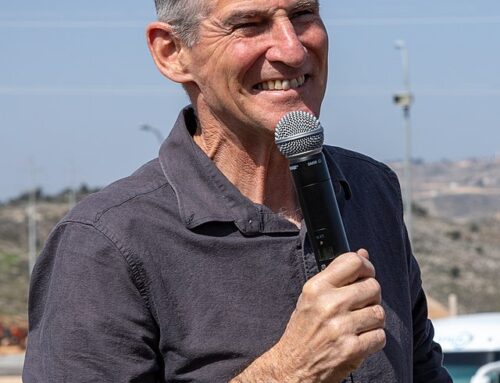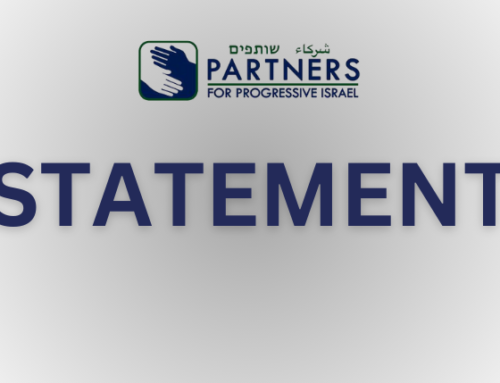As I rewrite this article on October 6th, the day before the first anniversary of Hamas’s attack on Israel, the long-expected war between Israel and Hezbollah appears to be underway. Sixty thousand Israelis have now spent a year away from their homes in northern Israel due to Hezbollah rockets – and a larger number of southern Lebanese have fled northwards to presumed safety. Hezbollah, the dominant political and military power in the failed state of Lebanon, has been increasing the number of its daily salvos– as has the IDF. Every few weeks, seemingly, Israel comes up with a nifty, new, and deadly means of attack, while Hezbollah can only launch the same old missiles. Israel stunned the world and threw Hezbollah into chaos with its unprecedented pager attack, but humiliating reverses are unlikely to force Hamas to cease its missile assaults.
This conflict is not about disputed land, nor about nationalism, nor about any of the things that nations usually fight about. Hezbollah (“Party of God”), of course, is not a nation-state, though its power dwarfs that of the official Lebanese army. Sectarian militias dwarfing Lebanon’s official army has a long tradition in Lebanon; until Israel’s withdrawal from its occupied “security zone” in 2000, Lebanon’s south was controlled by the IDF-supplied, Christian-dominated South Lebanese Army.
In fact, Hezbollah’s existence is only an artifact of what Israel calls the First Lebanon War in 1982. The Shi’a Muslims in the south first welcomed the IDF with flowers; but when Israel’s army showed a marked reluctance to leave, they formed Hezbollah, with considerable help and encouragement from the then-new Islamic Republic of Iran. Its declared aim was the expulsion of the IDF from Lebanon – and the IDF’s gift to Hezbollah was that it stayed in its security zone until 2000, thus allowing Hezbollah to justify its existence when all other sectarian militias were disbanded with the end of the Lebanese Civil War in 1989.
When Israel finally did withdraw in 2000, Hezbollah literally faced an existential crisis; what now justified its existence? Although the UN, not generally a fan of Israel’s, had certified the IDF’s complete withdrawal, Hezbollah seized on the patch of disputed ground called Shebaa farms to claim that Israel still occupied Lebanon. With no force willing or able to evict it, Hezbollah hung on as a relic of the Lebanese civil war and invasions of the last quarter of the 20th century. It had had plenty of time to stoke its hatred of Israel during the previous 18 years, including for the 1992 assassination of its founding leader, Sheikh Abbas Musawi, succeeded by Sheikh Hassan Nasrallah who turned out far more capable.
After Israel’s withdrawal, the border generally remained quiet, with a few exceptions, until Nasrallah, taking advantage of Israel’s distraction by the abduction of Corporal Gilad Shalit by Hamas in June of 2006, tried a similar caper in the north. They killed 8 Israeli soldiers and kidnapped 2, hoping, presumably, to extract a humiliating price for them. Instead they got what Israel calls its Second Lebanon War, launched impetuously by a new and unseasoned prime minister, Ehud Olmert. While Lebanon and Hezbollah were unquestionably battered, so was the IDF. No victor was ever declared, but Nasrallah became the most popular man in the Arab world for inflicting what many considered a defeat on the hitherto seemingly invincible IDF. Olmert, ironically, went on to draw up a peace deal with Palestinian leader Mahmoud Abbas which both men left on the table, in large part because Olmert’s popularity and political effectiveness had been blown away by the Lebanon fiasco.
The 2006 war seemingly reminded Iran of its Shi’a ally in Lebanon. While Hezbollah’s mission remained unclear, its strategic location led Tehran to shower it with warfighting materiel, especially rockets to be aimed at its southern neighbor. Within a decade, it was generally known (or rumored) that 150,000 missiles of widely varying capabilities were aimed at Israel, all under Hezbollah’s control, courtesy of Iran. Hezbollah repaid Iran during the Syrian civil war, which began in 2011, supplying thousands of fighters who helped keep Bashar Assad in power. They returned battle-hardened, and the arms continued to flow, with Hezbollah now major force, whose allegiance was divided between its Lebanese nationality and its presumed subordination to Iranian policy.
Fast forward to the present, when Iran, Hamas, Hezbollah, the victorious Houthi rebels in Yemen, as well as the largely destroyed state of Syria, are united in a loose “Axis of Resistance”; largely Shi’a or adjacent, fiercely anti-Israel and anti-American. No one really knows the extent of Iran’s control or the degree of autonomy they have. For example, it seems fairly clear that Iran did not order, or even know about, Hamas’s Operation Al-Aqsa Flood last October 7.
To this day, Hezbollah’s raison d’etre remains unclear, though it is undoubtedly committed to the illegitimacy of Israel (as were all Arab states from 1948 to the 1970s, and many beyond). It certainly acts as an extension of Iranian power, and presumably the balance of terror over Israel’s northern border has helped deter Israel from fantasies of attacking Iran. When Israel responded to Hamas’s October 7 attacks on Israel’s southern “envelope”, Hezbollah promised to keep attacking Israel until it withdrew from Gaza, likely little suspecting that Israel would still be there a year later.
Would Hezbollah stop launching Israel-bound rockets if Israel signed a cease-fire with Hamas? Certainly, but Israel has now apparently taken that off the table. However, it steadfastly refuses to pull its forces back to the Litani River, 28 kilometers from the border, as specified in 2006 by UN Security Council resolution 1701 and demanded by Israel. 1701 also foresaw the disarmament of Hezbollah and its replacement by the Lebanese Army, but that is the stuff of fantasy. As of October 6, the strategic position seems to some completely changed from that of a few weeks earlier. Nasrallah is dead, Hezbollah is decapitated and in disarray, and Iran launched 180 ballistic missiles at Israel, of which few if any hit their targets, and the only fatality, ironically, was a West Bank Palestinian killed by falling debris. Two thousand Lebanese reportedly have been killed and a million are fleeing their homes. Some are even crossing over to Syria to seek refuge. Israel has announced a fifth division is entering Lebanon for the “limited operation,” which means 40,000-60,000 soldiers. Israel has also sent planes 1000 miles to respond to Houthi drones fired at Israel. While this may not yet be a “fullscale war,” on the level of, say, the Yom Kippur War of October 1973, there can be no doubt that Israel is engaged in a deadly serious attempt to change the strategic situation in the Middle East, and perhaps hopes to eliminate Hezbollah as a serious military force, thus depriving Iran of its most important Arab ally and humiliating it further.
This is the second time Israel has tried to upend the geopolitics of the Middle East with a “limited” invasion of Lebanon. The first, in 1982, did not end well for Israel. It entered Lebanon in the midst of a multi-sided civil war ostensibly to evict the Palestine Liberation Organization (PLO), and succeeded in dispatching them to Tunisia, where they remained until the Oslo Accords of 1993. In addition, apparently unbeknownst to the rest of the Israeli government, Defense Minister Ariel Sharon had made a deal with the Maronite Christians to help control the Lebanese parliament so the Christian leader, Amin Gemayel, would be elected president-upon which he would sign a peace treaty with Israel. Israel did its part – and Gemayel was duly elected.
He never took office, however as he was blown up by a massive car bomb before inauguration. His bereft soldiers, bent on revenge, entered the Sabra and Shatilla refugee camps in Beirut, which were under Israeli control, and massacred an estimated 2500 Palestinian women and children. This was over Rosh Hashanah in 1982, exactly 42 years ago. The peace treaty never took effect, Hezbollah become Iran’s most important ally, and Lebanon changed from a nominal enemy to a real and active one. Israel remained in Lebanon until 2000, leaving bitter memories on both sides of the border.
I have no idea whether the IDF can put an end to Hezbollah this time, or how successful it may be in changing its deterrence equation with Iran. You may have a better idea by the time you read this. I do expect, sadly, that the war in Gaza will keep going, though Israel could likely put an immediate end to Hezbollah‘s missile attacks and free the remaining hostages by agreeing to the long-sought ceasefire with Hamas.
Nevertheless, please accept my best wishes for a sweet, happy, and, most of all, peaceful New Year’s season to all, wherever they are or what religion they practice. Thanks to you, dear readers, for your interest in and support of Partners for Progressive Israel.
Sincerely,

Paul

Paul Scham is President of Partners for Progressive Israel and Director of the Gildenhorn Institute for Israel Studies at the University of Maryland, where he is a Professor of Israel Studies. The views expressed here are his own.





